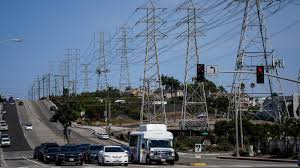The electric grid operator in California has authorized a proposal for 45 new power transmission projects, estimated to cost $7.3 billion over the next ten years, and made it simpler for new power plants in high-priority locations to connect to the grid.
According to the California Independent System Operator (CAISO), the projects will contribute to the development of more than 40 gigawatts (GW) of new power resources.
Even more new electricity will be needed in the coming years, according to the CAISO, as electrification spreads to other economic sectors, most notably transportation and the construction industry.
According to the statement, California will host the great bulk of the transmission projects while Arizona will also host a few.
The grid in the state will be able to add more than 17 GW of solar resources, 8 GW of wind generation, 1 GW of geothermal development, and battery storage projects thanks to the power lines suggested by CAISO’s 2022–2023 Transmission Plan.
When building new power lines and plants, CAISO will give priority to those in designated geographic areas where doing so “makes the most economic and operational sense.”
The grid operator also authorized changes that were suggested to account for “increasing levels of net load forecast uncertainty between day-ahead and real-time markets… as the generation fleet evolves towards a cleaner, but more variable, resource mix.”
According to its forecast, the state may need to add 70 GW of new electricity to the grid by 2033, and then 120 GW by 2045 as it works to achieve its objective of a carbon-free power system.
According to the North American Electric Reliability Corp.’s (NERC) summer outlook released on Wednesday, the power supply in the western United States is susceptible to excessive heat since it depends on regional energy transfers to satisfy demand during peak hours or when solar output is reduced.

















